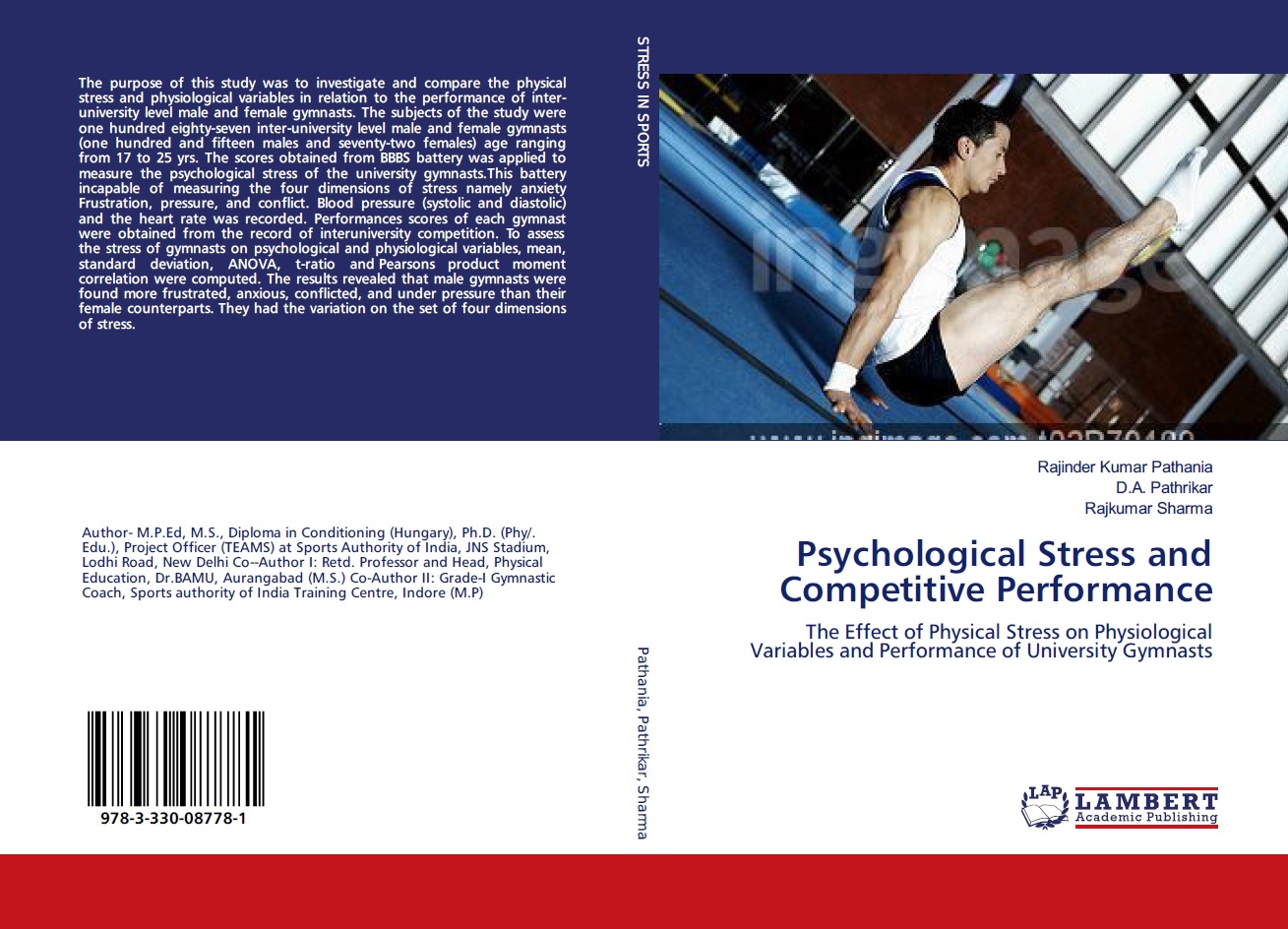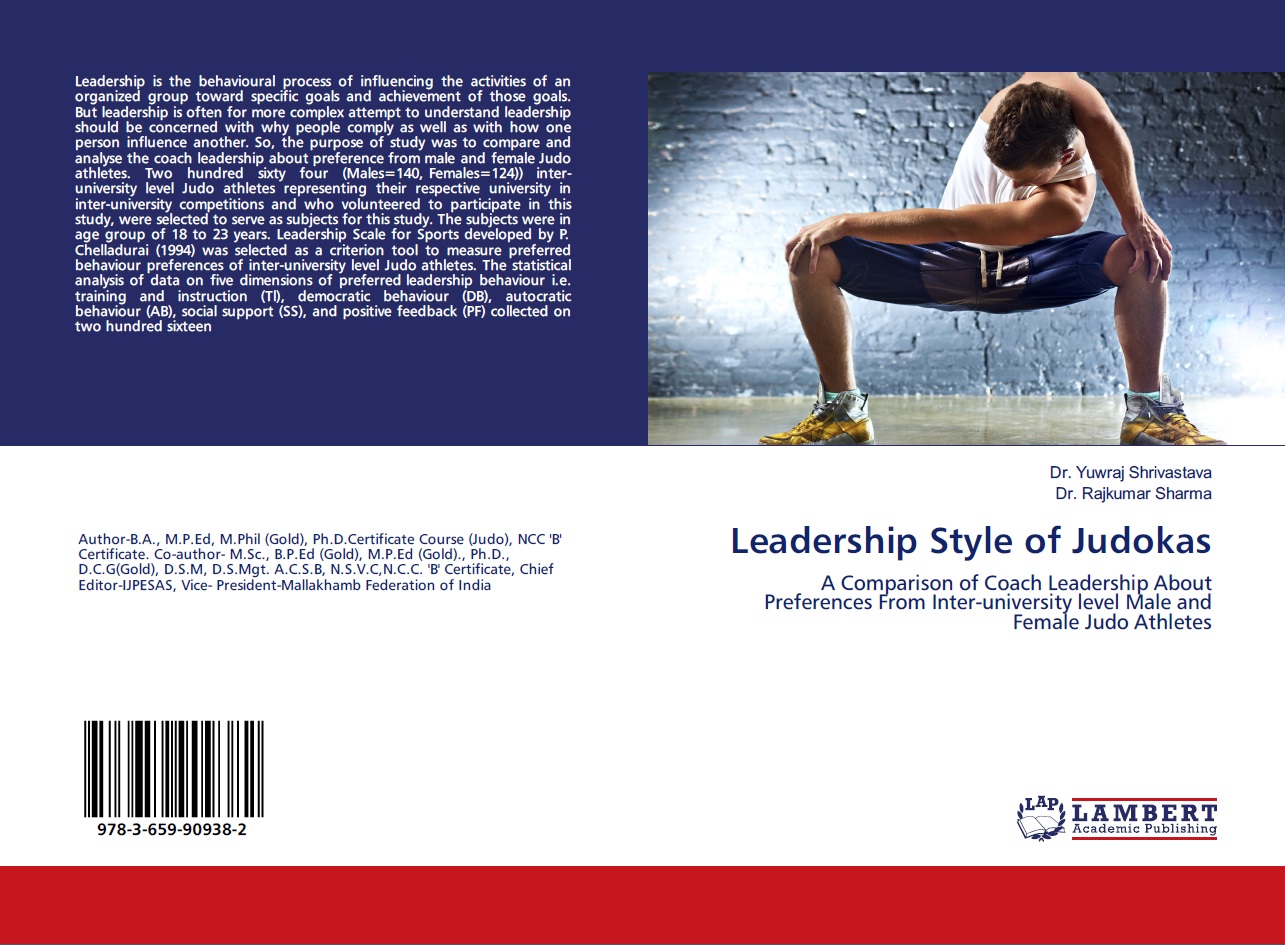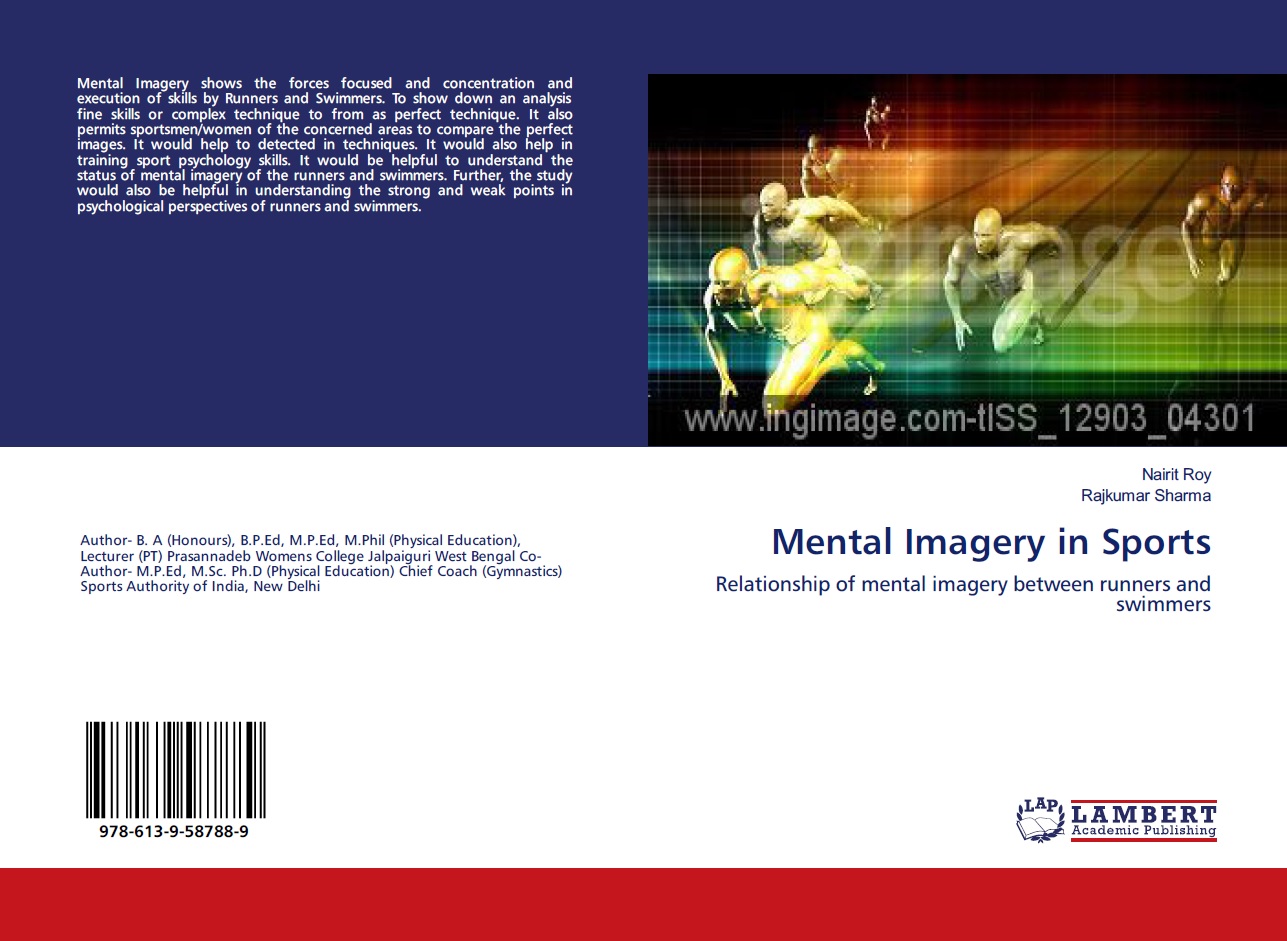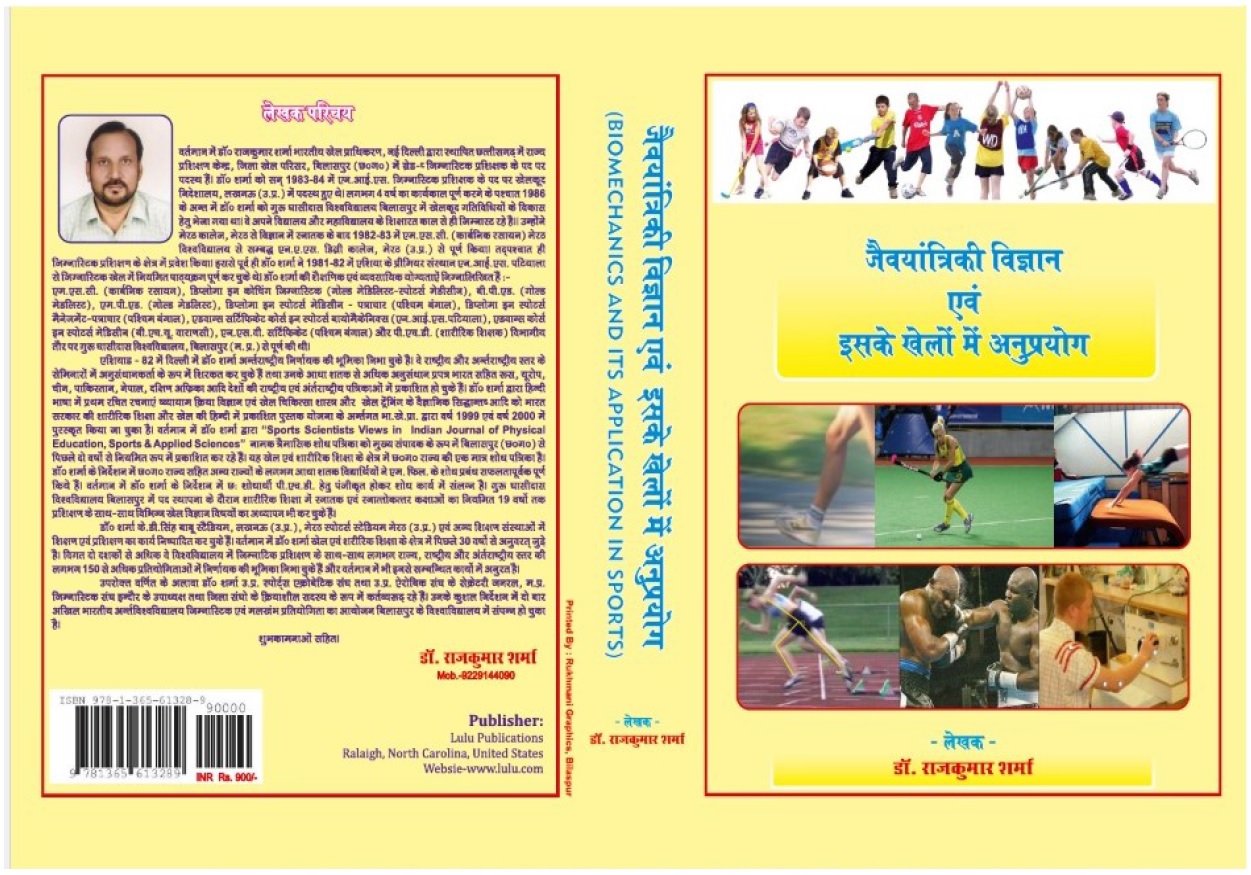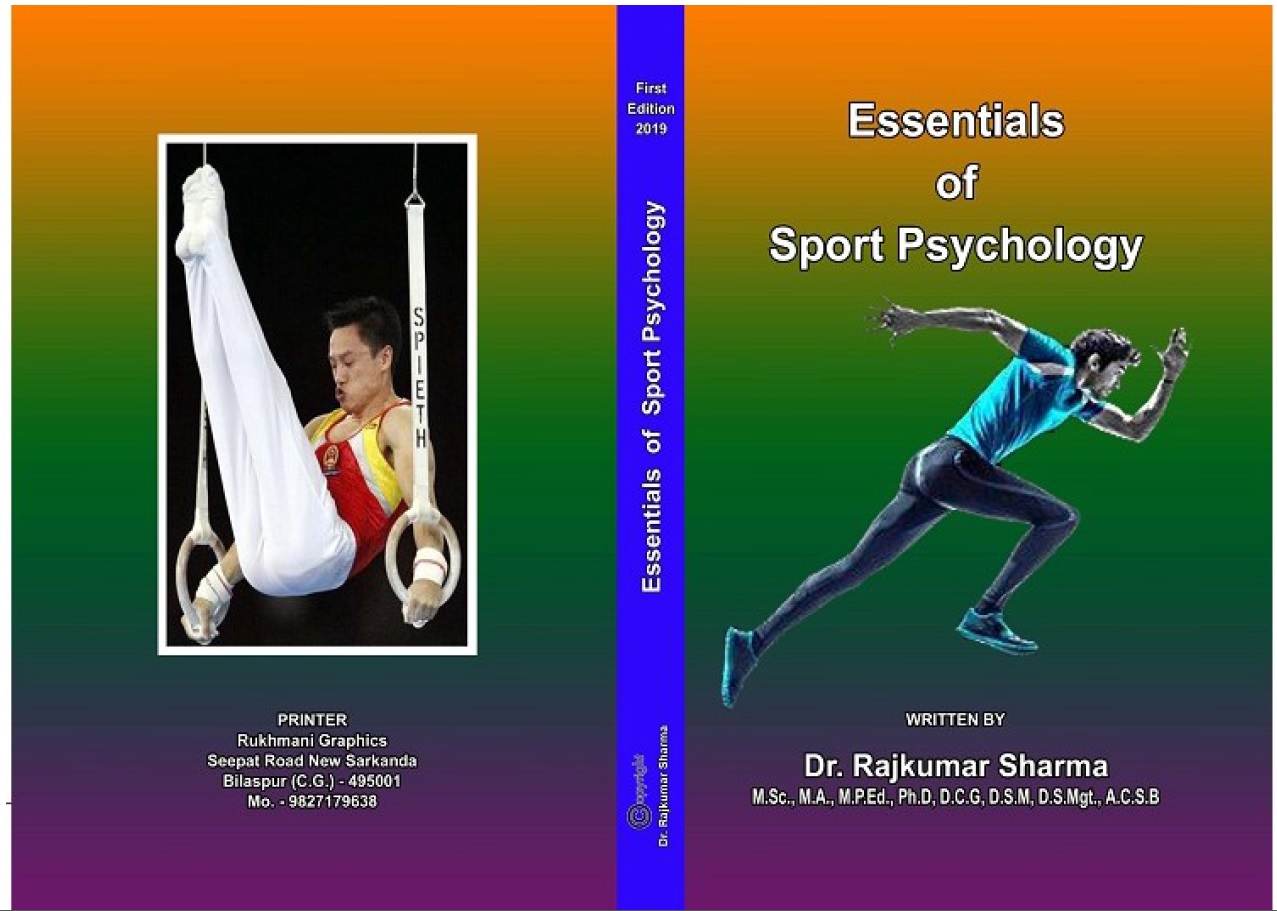| S.No. | Total View Count | Title of Manuscript | Page No | Download/ PDF |
|---|---|---|---|---|
| 1 | BODY DISSATISFACTION, PATHOGENIC WEIGHT CONTROL BEHAVIOUR AND PERFORMANCE AMONG ELITE ATHLETES Author: Tija Agarwal 1, and Dr. Samridhi Ahuja Bakshi2 | 45-56 |  6 6 |
Article info
doi no.: 05-2016-44975451;
AFFILIATIONS:
1. Masters in Psychology (Clinical) CHRIST (Deemed to be University), Bengaluru, Karnataka, India
2. Department of Psychology, CHRIST (Deemed to be University), Bengaluru, Karnataka, India
Body dissatisfaction and Weight control behaviour among athletes in different types of sports is becoming increasingly pervasive in developing non-Western countries such as India and impacting sport performance. However, there exist a lack of research investigating the relationship between these problems. The current study examined the relationship between body dissatisfaction and weight control behaviour, weight control behaviour and performance as well as gender difference in body dissatisfaction among elite athletes. The study followed the correlational research design. The data was collected from 92 elite athletes (46 males and 46 females) between the ages of 12-22 from India by employing self –report measures of MBSRQ-BASS, EAT-26 and ASPS. The findings of the study suggest that body dissatisfaction was negatively corelated with weight control behaviour. Our results show no corelation between weight control behaviour and decreased performance. Additionally, there was no significant difference between males and females in body dissatisfaction. Educational programs should include strategies to help athletes increase body satisfaction and apply and adopt desirable and appropriate weight control behaviour.
Keywords: body dissatisfaction, elite athletes, performance, weight control behaviour.
References
Anderson , C., Petrie, T., & Neumann, C. (2012). Effects of sport pressures on female collegiate athletes: A preliminary longitudinal investigation. Sport, Exercise, and Performance Psychology, 1(2), 120–134. https://doi.org/10.1037/a0026587.
Anderson, C., & Petrie, T. (2012). Prevalence of Disordered Eating and Pathogenic Weight Control Behaviors Among NCAA Division I Female Collegiate Gymnasts and Swimmers. Research Quarterly for Exercise and Sport, 83(1), 120–124. DOI: 10.1080/02701367.2012.10599833.
Artioli , G., Franchini , E., Nicastro , H., Stanislaw , S., Solis , M., & Junior, A. (2010). The need of a weight management control program in judo: a proposal based on the successful case of wrestling. Journal of the International Society of Sports Nutrition  7,15. https://doi.org/10.1186/1550-2783-7-15.
7,15. https://doi.org/10.1186/1550-2783-7-15.
Bratland-Sanda, S., & Sundgot-Borgen, J. (2013). Eating disorders in athletes: overview of prevalence, risk factors and recommendations for prevention and treatment. European journal of sport science, 13(5):499-508. doi: 10.1080/17461391.2012.740504.
Cash, T. F. (2000). The MBSRQ users’ manual (3rd ed.). Available from the author at www.body-images.com
Degoutte, F., Jouanel, P., Bègue, R., Colombier, M., Lac, G., Pequignot, J., & Filaire, E. (2006). Food restriction, performance, biochemical, psychological, and endocrine changes in judo athletes. International journal of sports medicine, 27(1), 9–18. https://doi.org/10.1055/s-2005-8375
Dosil , J., & González-Oya, J. (2012). Eating disorders and the Athlete’s environment. England : John Wiley & Sons Ltd, 41-63. DOI: 10.1002/9780470725047.ch3
Festinger, L. (1954). A theory of social comparison processes. Human Relations, 7, 117–140
Filaire, E., Maso, F., Degoutte, F., Jouanel, P., & Lac, G. (2001). Food restriction, performance, psychological state and lipid values in judo athletes. International journal of sports medicine, 22(6), 454–459. https://doi.org/10.1055/s-2001-16244.
Franchini, E., Brito, C., & Artioli, G. (2012). Weight loss in combat sports: Physiological, psychological and performance effects. Journal of the International Society of Sports Nutrition, 9(1), 52–57. doi:10.1186/1550-2783-9-52.
Garner, D., Olmsted, M. P., Bohr, Y., & Garfinkel, P. E. (1982). The Eating Attitudes Test: Psychometric features and clinical correlates. Psychological Medicine, 12(4), 871- 878.
Garner, D. (2009). EAT-26 Self-Test. Retrieved from http://www.eat-26.com/index.php
Goldschmidt, A., Wall, M., Loth, K., Grange, D., & Neumark-Sztainer, D. (2012). Which dieters are at risk for the onset of binge eating? A prospective study of adolescent and young adults. Journal of Adolescent Health, 51 (1), 86-92. doi: 10.1016/j.jadohealth.2011.11.001.
Greenleaf, C., Petrie, T., Carter, J., & Reel, J. (2009). Female Collegiate Athletes: Prevalence f Eating Disorders and Disordered Eating Behaviors. Journal of American College ealth, 57(5), 489-496. https://doi.org/10.3200/JACH.57.5.489-496.
Hagmar M, Hirschberg AL, Berglund L, Berglund B. (2008). Special attention to the weight- ontrol strategies employed by Olympic athletes striving for leanness is required.Clinical Journal of Sports and Medicine. 8(1), 5-9.doi .1097/JSM.0b013e31804c77bd.
Heider, N., Spruyt, A., & De Houwer, J. (2018). Body Dissatisfaction Revisited: On the mportance of Implicit Beliefs about Actual and Ideal Body Image. Psychological elgica, 57(4), 158–173. http://doi.org/10.5334/pb.362.
Howells, K., & Grogan, S. (2012). Body image and the female swimmer: muscularity but in oderation. Qualitative Research in Sport, Exercise and Health, 4(1), 98–116. ttps://doi.org/10.1080/2159676X.2011.653502.
Lakicevic, N., Roklicer, R., Bianco, A., Mani, D., Paoli, A., Trivic, T. Drid, P. (2020). ffects of Rapid Weight Loss on Judo Athletes: A Systematic Review. Nutrients, 2(5), 1220; https://doi.org/10.3390/nu12051220.
Martinsen M, Bratland-Sanda S, Eriksson AK, Sundgot-Borgen J. (2010). Dieting to win or o be thin? A study of dieting and disordered eating among adolescent elite athletes nd non-athlete controls. Br J Sports Med., 44(1):70-6. oi:10.1136/bjsm.2009.068668.
Melching, K., Green, M., O'Neal, E., & Renfroe, L. (2016). Body Image Dissatisfaction: esponses between Male and Female Exercisers and Non-Exercisers. International ournal of Exercise Science, 9(3): 249-257.
Mahon, J., & Barker-Ruchti, N. (2017). Assimilating to a boy’s body shape for the sake of erformance: Three female athletes’ body experiences in a sporting culture. Sport, ducation and Society, 22(2), 157–174. ttps://doi.org/10.1080/13573322.2015.1013463.
Nahum, O., Ben-Ami, M., Cohen, D., & Shivek, A. (2016). Athlete’s Subjective Performance cale. Retrieved from https://sportperformance.wordpress.com/ ahum, O. (2020). Key Resources and Engagement among Professional Athletes (Doctoral issertation). University of Haifa, Israel
Peiling, K., & Lynne, H. (2015). The Sporting Body: Body Image and Eating Disorder ymptomatology Among Female Athletes from Leanness Focused and Nonleanness ocused Sports. The Journal of Psychology, 149(2), 141-160, DOI: 0.1080/00223980.2013.846291.
Petrie, T. A., & Greenleaf, C. (2007). Eating disorders in sport: From theory to research to ntervention. In G. Tenenbaum, & R. Eklund (Eds.), Handbook of sport psychology pp. 352–378).
Hoboken, NJ: John Wiley & Sons. eale, R., Slater, G., & Burke, L. (2018). Weight Management Practices of Australian lympic Combat Sports Athletes. International Journal of Sports Physiology an erformance, 13(4), 459–466. https://doi.org/10.1123/ijspp.2016-0553.
Reina, A., Monsma, E., Dumas, M., & Gay, J. (2019). Body image and weight management mong Hispanic American adolescents: Differences by sport type. Journal of dolescence, 74, 229-239. https://doi.org/10.1016/j.adolescence.2019.06.014.
Eljic, D., Hässler, E., Jost, J., & Friedmann-Bette, B. (2013). Rapid weight loss and the body luid balance and hemoglobin mass of elite amateur boxers. Journal of athletic raining, 48(1), 109–117.https://doi.org/10.4085/1062-6050-48.1.05.
raining, 48(1), 109–117.https://doi.org/10.4085/1062-6050-48.1.05.
Shander, K., & Petrie, T. (2021). Transitioning from sport: Life satisfaction, depressive ymptomatology, and body satisfaction among retired female collegiate athletes. sychology of Sport and Exercise, 57. ttps://doi.org/10.1016/j.psychsport.2021.102045.
Stice, E. (1994). A review of the evidence for a sociocultural model of bulimia nervosa and n exploration of the mechanisms of action. Clinical Psychology Review, 14, 633-661.
Sundgot-Borgen, J., & Larsen, S. (2007). Pathogenic weight-control methods and self- eported eating disorders in female elite athletes and controls. Scandinavian Journal f Medicine & Science in Sports, 3(3), 150-155. https://doi.org/10.1111/j.1600- 8.1993.tb00379.x.
Thompson, R., & Sherman , R. (2015). Eating Disorders in Sport. New York: Routledge. urocy,
P., DePalma, B., Horswill, C., Laquale, K., Martin, T., Perry, A., . Utter, A. (2011). National Athletic Trainers' Association Position Statement: Safe Weight Loss and aintenance Practices in Sport and Exercise. Journal of athletic training, 46(3), 322– 36. https://doi.org/10.4085/1062-6050-46.3.322.
 admin@sportscientistsviews.com
admin@sportscientistsviews.com

